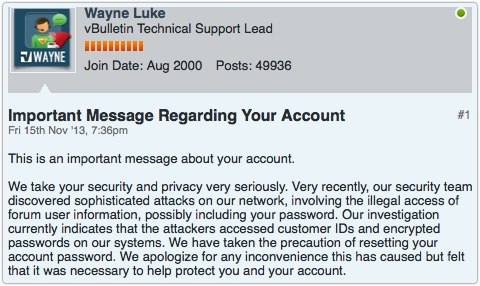Oz gov sysadmins ASLEEP AT THE WHEEL
Free Regcast : Managing Multi-Vendor Devices with System Centre 2012
Systems administrators in charge of Australian parliamentarians’ computers have been dozing at the wheel, don’t read The Guardian, and have completely failed to notice PRISM or Edward Snowden, a Senate Estimates hearing has revealed.
Alternatively, Department of Parliamentary Services (DPS) sysadmins are today queuing at the boss’ office to protest that actually, their network is not a walk-in coffee-lounge frequented by NSA spooks taking time off from talking their girlfriends and exes, and that the Australian Signals Directorate watches it like a hawk.
The impression that there are holes in Canberra’s dam walls came courtesy of a session in which Greens Senator Scott Ludlam played all the best cards in the Snowden slide-deck, to the discomfiture of the Department of Parliamentary Services’ CIO, Eija Seittenranta.
“We know that Microsoft’s software contains a backdoor … do we provide for a specific patch against that backdoor, or is the parliament’s network open to intrusion by the US government?”, Ludlam asked (a question which The Register notes presumes the accuracy of Snowden’s leaks).
In answering, Seittenranta noted that the DPS has never received “any specific advice” about vulnerabilities that are actually built into products (something denied by Redmond).
“When you became aware that the security vulnerability existed, that has been built into the software that we are all forced to use in this building, did you notify the occupants of this building?” Ludlam asked.
Seittenranta’s response, that the DPS is “dependent on advice” from the ASD, did not satisfy the senator, who pressed on by observing that ““If the Chinese government had opened a backdoor in the operating system of every device in this room, and indeed this building, it would be a gargantuan scandal and presumably you would have called the ASD as soon as you were notified”.
If a backdoor exists and isn’t protected by anything else, Seittenranta conceded that computers on the DPS network would inherit such a vulnerability. She added that in other contexts, such as computers operated by members of the ministry, security would be the responsibility of different departments.
This irritated Ludlam, since that means “I would have to chase the departments around this building one-by-one” to see how ministerial computers are secured.
In Seittenranta’s support, another officer of the DPS said the department had never observed untoward outward messages from parliamentary computers. Since parliamentary computers are used, among other things, for communications such as e-mail, The Register presumes the statement that there were “no outward messages sent to Microsoft or any other organisation” didn’t include legitimate communications.
Ludlam also appears to be under the impression that parliamentary machines are using US-hosted Microsoft cloud services: “Are you aware that Microsoft is under a legal obligation to allow the NSA access to its servers and its hosting services?” he asked.
She said the department has no validation that any backdoor exists, which Ludlam disputed by referring back to his statements about cloud services – “the primary documents are in the public domain, that Microsoft is under a legal obligation to open that security hole … every device in this building has been backdoored,” he said. ®
Free Regcast : Managing Multi-Vendor Devices with System Centre 2012
Article source: http://go.theregister.com/feed/www.theregister.co.uk/2013/11/19/oz_gov_sysadmins_asleep_at_the_wheel/
 According to its own website, vBulletin is “the world’s leading community software,” and many forums, message boards and social networking sites use it.
According to its own website, vBulletin is “the world’s leading community software,” and many forums, message boards and social networking sites use it.

